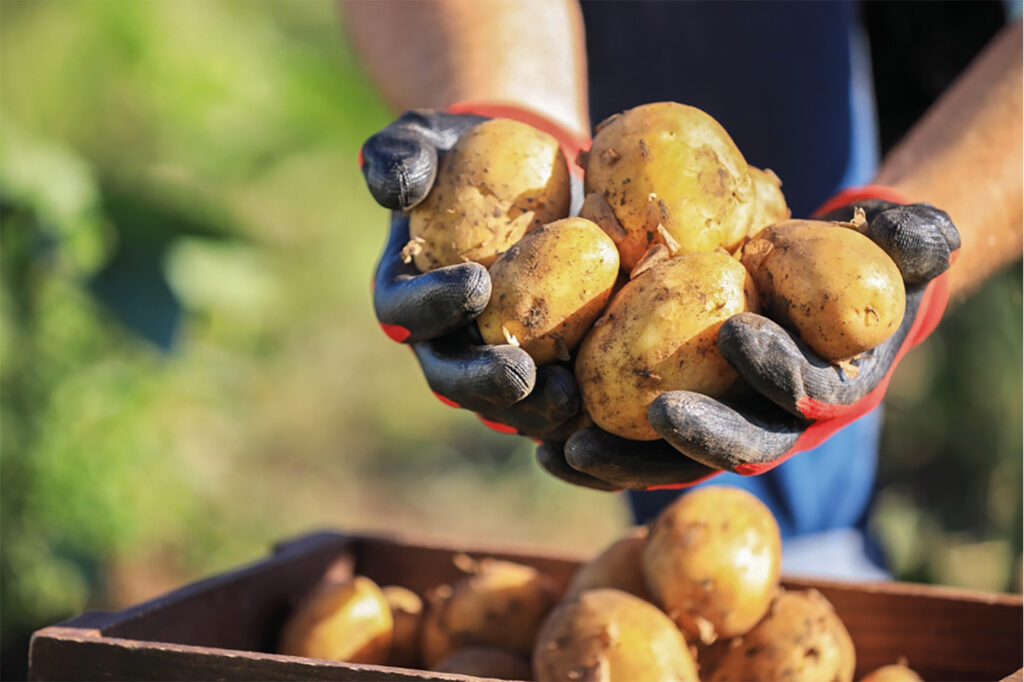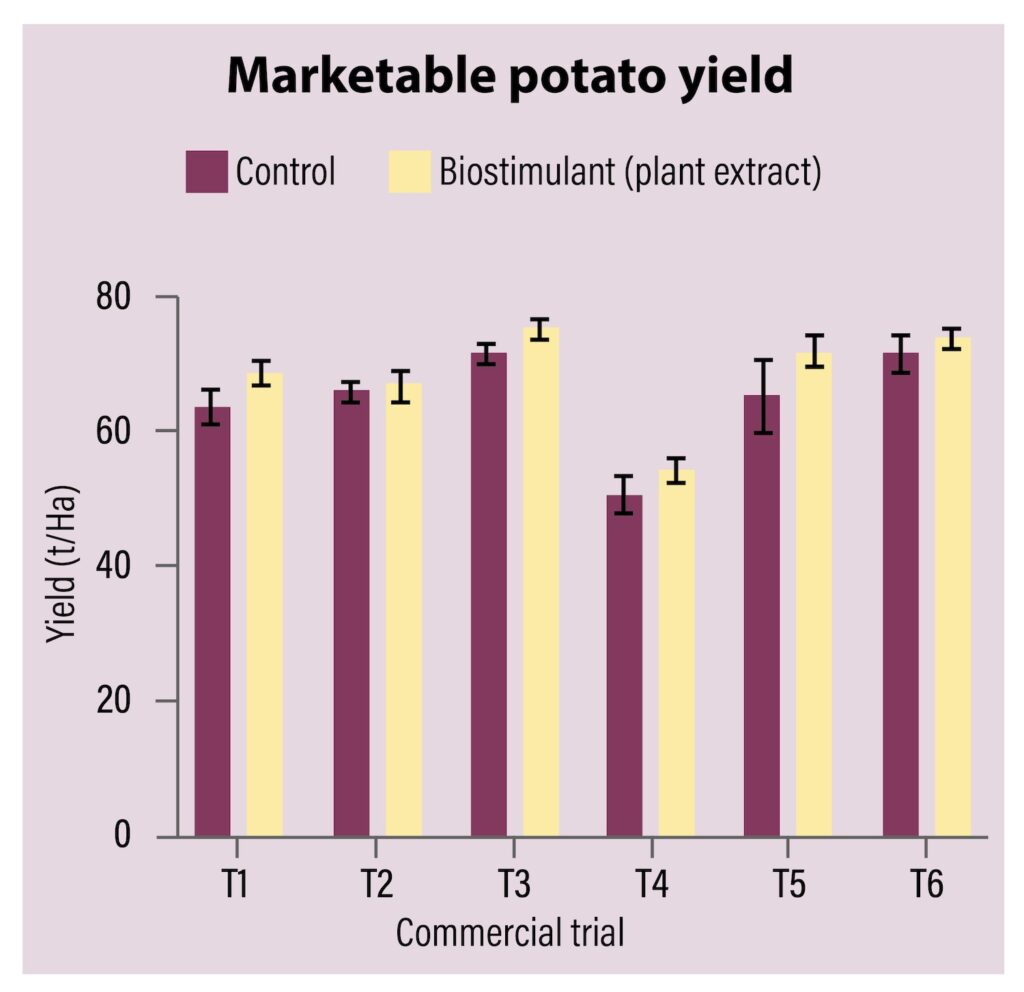Can a biostimulant improve your potato crop?
3rd November 2023
British potato farmers have been facing significant challenges in recent years. The costs of production have all increased substantially and the sector is also being asked to become more sustainable. Everybody wants more predictability in the cost of inputs, marketable yield and the selling price at the farm gate. More and more UK potato farmers are turning to biostimulants to mitigate these challenges. Maxstim Ltd CEO Richard Salvage and CSO Dr Colin Fleming, who are both research scientists at the Institute of Global Food Security at Queens University, Belfast, explain.

The recent volatility in fertiliser prices has demonstrated the vulnerability of UK agriculture to external factors. Agricultural production and food security is also threatened by the effects of unfavourable environmental and soil conditions, in particular drought, salinity and extreme temperatures, which are responsible for 70% of global crop yield losses imposed by climatic stress. In meeting these challenges, the application of plant biostimulants has been shown to be one of the most promising and effective tools for maintaining yield stability.
Consequently, biostimulants are increasingly being used by growers across the world, with the commercial value of agricultural biostimulants currently over 3 billion US dollars, stimulated by an annual growth rate of 10%. The adoption of biostimulants in agriculture and horticulture across Europe and the UK has encouraged a number of organisations to properly resource research and development into new and improved biostimulant formulations. Many farmers have been aware of the more traditional biostimulants such as seaweed extracts and amino acids that have been around for many years. However, as these new bioactive compounds are made available, we are seeing major improvements in:
- Yield increases
- Nutrient use efficiency
- Tolerance to abiotic stress
- Quality traits
- The availability of confined nutrients in the soil.
- Two main classes of plant biostimulants in use are:
- Microbial plant biostimulants which contain living fungal and bacterial strains.
- Non-microbial plant biostimulants, which include:
- Plant extracts
- Animal and vegetal protein hydrolysates (e.g. amino acids)
- Seaweed extracts
- Silicon
- Humic and fulvic acids
- Phosphites
- Chitosan.

Combinations of these components when properly researched and optimised can create synergistic effects producing better performing complex biostimulants.
Significantly, it is important to note that plant biostimulants are not fertilisers (i.e. biostimulant activity does not rely upon the presence of nitrogen and other nutrients in the formulation) and they do not include active ingredients which act as fungicides, insecticides or nematicides.
So how do biostimulants work?
Historically, the effectiveness of materials sold as biostimulants could be extremely variable, largely due to inconsistencies in raw materials, extraction and formulation. This led to disappointing results in the field and a poor understanding of how biostimulants actually act on plants. New sources of biostimulants, modern processing and better formulation techniques can deliver stable and effective formulations which generate reliable results in crops and have allowed scientists to start identifying modes of action. We now understand that the bioactive materials in biostimulants act on multiple biochemical processes in plants to modify germination, root and shoot growth, photosynthesis, flowering, plant hormone pathways and prime plants to better tolerate abiotic stress.
A review of data from multiple field trials across the world has demonstrated that crop responses to biostimulant application depended on the biostimulant type, the application method, crop type, soil properties and climate. In general, the greatest yield responses were observed after the application of biostimulants derived from plant extracts and in crops growing under stress. The analysis also showed that biostimulants induced the highest yield increases in vegetable crops. Recent experimental and commercial trials in the UK and Europe have demonstrated the potential for complex biostimulants to improve potato production.
Potato growers already use a range of methods to maximise yields and optimise quality parameters including marketable tuber size, shape, absence of defects, skin finish, flavour, colour, nutritional composition (e.g. vitamin C, protein) and the texture of cooked or processed tubers. Many of these tuber quality parameters (e.g. tuber texture and colour of cooked and processed potato products) are affected by starch and sugar content, so the ability to manage potato physiology and metabolism (e.g. carbohydrate and nitrogen metabolism) is key to improving crop condition.
Biostimulants can influence all these processes and have a significant role to play in modern potato crop management. Most recently it has been shown that plant biostimulants can reduce the required level of fertiliser and other inputs, without affecting potato yields (an increase in nutrient use efficiency). Similarly, trial data have shown that quality features such as skin finish, tuber size, protein, vitamin C, starch and phenol content can all be influenced by plant biostimulant treatment.
When selecting a complex biostimulant it is important to consider the quality of the experimental and field trial data. Farmers should expect to see good quality replicated and statistically significant data sets to back up any increased yield and quality claims. With potato farmers increasingly under pressure to minimise the environmental impact of production whilst dealing with an increasingly variable climate, plant biostimulants can play an important role in ensuring yields, crop quality and profits.
